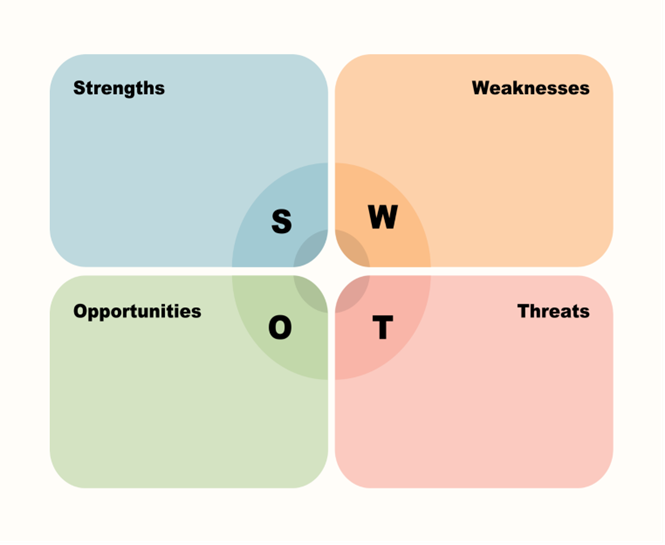I. Introduction
This study aims to analyze how contemporary strategic frameworks and models, including Parenting Competencies, The Neurotic Organization, Capacity Maturity Models, Kay's Distinctive Capabilities, and Seven Hats Decision-Making, are applied in selected banks in Kenya. Understanding how these models are utilized will provide insights into their relevance, challenges, and contributions to strategic management and decision-making in the banking sector.
II. Objectives of the Study
To examine how the Parenting Competencies framework is applied by banks in Kenya to manage subsidiaries, business units, and organizational growth.
To assess the prevalence of The Neurotic Organization model in Kenyan banks, analyzing its effects on leadership, culture, and decision-making.
To investigate the use of Capacity Maturity Models in the banking sector and their role in developing organizational capabilities, particularly in digital transformation.
To analyze the implementation of Kay’s Distinctive Capabilities in banks, and how this framework is used to achieve sustainable competitive advantage.
To evaluate the role of the Seven Hats Decision-Making model in improving decision-making processes within the banking sector.
III. Research Questions
How are Parenting Competencies used by Kenyan banks to manage their strategic objectives and improve organizational performance?
Do Kenyan banks demonstrate characteristics of The Neurotic Organization, and what are the implications of this on organizational behavior?
What is the level of adoption of Capacity Maturity Models in the banking sector, and how do they impact organizational development and innovation?
How do Kay’s Distinctive Capabilities influence the competitive positioning of banks in Kenya?
To what extent is the Seven Hats Decision-Making framework applied by decision-makers in Kenyan banks to enhance strategic decision-making?
IV. Methodology
This study will employ a mixed-methods approach, combining qualitative and quantitative research methods.
Data Collection Methods:
Surveys and Questionnaires: Administered to senior managers and decision-makers in selected banks to gather quantitative data on the application of strategic models.
Interviews: Semi-structured interviews with key personnel, including bank executives, managers, and strategists, to collect qualitative insights on the use of the models.
Case Studies: Focused on selected Kenyan banks known for their innovative strategies and leadership to explore in-depth how these models are applied.
Sampling:
The study will target 5-10 leading commercial banks in Kenya.
Participants will include senior management, middle managers, and strategists responsible for decision-making, digital transformation, and competitive positioning.
V. Theoretical Framework
This study will be guided by several theoretical frameworks, which will help structure the analysis of the strategic models:
Parenting Theory (related to Parenting Competencies)
Organizational Behavior and Leadership Theory (linked to the Neurotic Organization)
Capacity Maturity Models (maturity in process development and digital readiness)
Resource-Based View (RBV) and Competitive Advantage Theory (related to Kay's Distinctive Capabilities)
Decision-Making Theories (related to the Seven Hats Decision-Making framework)
VI. Literature Review
Parenting Competencies: This concept involves the role of senior management in managing business units and subsidiaries. It focuses on how top managers align strategies across different units and help achieve synergies. In banks, this could involve overseeing branches, subsidiaries, or new business models in financial services.
The Neurotic Organization: The term "neurotic" here refers to an organization with dysfunctional behaviors, often characterized by excessive stress, poor communication, and rigid structures. Understanding how banks operate under these conditions could reveal inefficiencies or barriers to innovation.
Capacity Maturity Models: These models are used to assess and enhance an organization's capabilities, particularly in IT and digital processes. They provide a roadmap for organizations to mature in their processes, improve customer service, and adapt to technological advances.
Kay's Distinctive Capabilities: This model posits that organizations should focus on their unique capabilities, such as customer relationships or technological competencies, to gain competitive advantage. Banks may apply this model to focus on customer intimacy or technological leadership.
Seven Hats Decision-Making: A structured decision-making framework that uses different thinking perspectives (e.g., factual, emotional, creative, and critical) to help organizations arrive at well-rounded decisions. This model can improve leadership effectiveness and strategic choices in banks.
VII. Data Analysis
Quantitative Analysis: Statistical tools (e.g., SPSS, Excel) will be used to analyze survey responses, with the aim of identifying trends and correlations in the application of these strategic models.
Qualitative Analysis: Content analysis will be employed to analyze interview transcripts and case study data, focusing on themes like decision-making practices, leadership, and organizational maturity.
VIII. Findings and Discussion
The findings will provide insights into:
Parenting Competencies: How banks apply this model in managing different business units, and how it aligns with their overall strategic objectives.
The Neurotic Organization: Whether banks show symptoms of neurotic organizational behavior and how it affects their ability to adapt and innovate.
Capacity Maturity Models: The extent to which banks have adopted these models to improve processes, digital capabilities, and competitiveness.
Kay’s Distinctive Capabilities: How banks leverage unique capabilities (e.g., customer service excellence or digital banking) to differentiate themselves in the market.
Seven Hats Decision-Making: How this framework is employed to guide strategic decisions, enhance teamwork, and support leadership in complex decision-making situations.
IX. Conclusion and Recommendations
The study will conclude with practical recommendations for:
Enhancing strategic planning and decision-making in Kenyan banks by incorporating contemporary models.
Addressing the challenges and opportunities associated with applying these models.
Proposing further areas for research on the impact of these models on organizational performance in the banking sector.
X. Implications for Policy and Practice
The findings from this study will be valuable to:
Bank Executives: Offering insights into how they can improve their strategic management and decision-making practices.
Regulatory Bodies: Providing evidence on how strategic frameworks impact the performance and competitiveness of banks in Kenya.
Academics and Researchers: Contributing to the growing body of knowledge on strategic management models in the banking sector.
XI. References
A comprehensive list of references will include books, peer-reviewed articles, industry reports, and case studies relevant to the strategic management models and their application in the banking sector.
